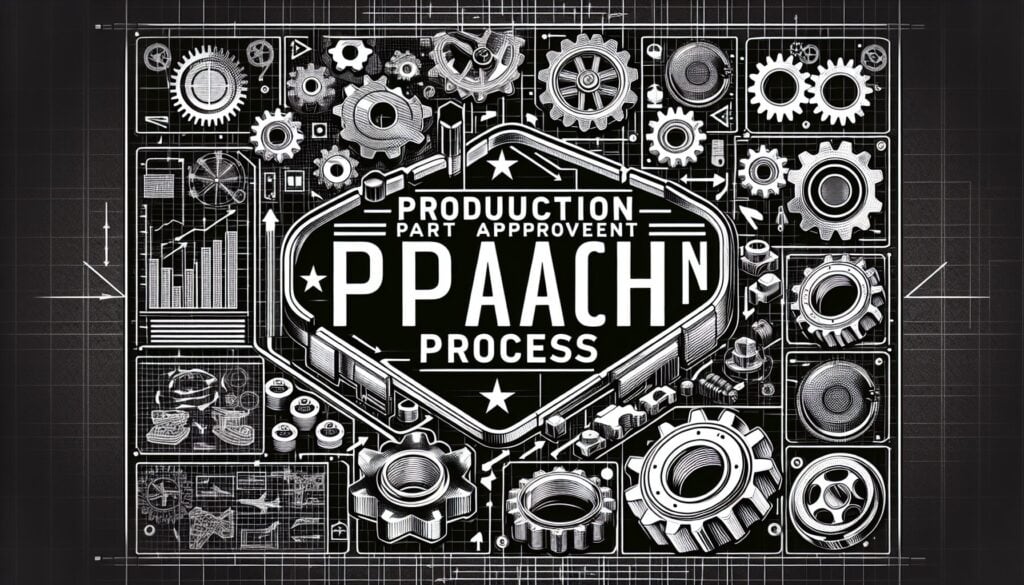A standardized process in the automotive and aerospace industries (and others) that ensures suppliers can consistently produce parts that meet the customer’s engineering design record and specification requirements.
- Methodologies: Customers & Marketing, Economics
PPAP (Production Part Approval Process)

PPAP (Production Part Approval Process)
- Advanced Product Quality Planning (APQP), Process Capability, Process Improvement, Production Part Approval Process (PPAP), Quality Assurance, Quality Control, Quality Management, Quality Management System (QMS), Supplier Power
Objective:
How it’s used:
- The supplier compiles a package of documents and samples (the PPAP package) providing evidence that their manufacturing process can consistently produce parts meeting all requirements. This package is submitted to the customer for approval before full production begins.
Pros
- Ensures clear communication of requirements between customer and supplier; Verifies supplier's understanding and capability to meet requirements; Reduces risks of non-conforming parts in production; Provides objective evidence of process capability.
Cons
- Can be very document-intensive and time-consuming for suppliers; Requirements can be complex and vary between customers; Any changes to product or process often require re-submission, adding to workload.
Categories:
- Manufacturing, Quality
Best for:
- Ensuring that suppliers' production processes are capable of consistently producing parts that meet all customer specifications before mass production.
PPAP is widely utilized in automotive, aerospace, and manufacturing industries, where the precise quality of parts is paramount. This methodology is particularly relevant during the transition from prototype to mass production, ensuring that any parts submitted can meet the design specifications and regulatory standards expected by the customer. Participants typically include suppliers, quality assurance teams, and engineering personnel from both the supplier and customer sides, creating a collaborative environment for clarity and mutual understanding. Key components of the PPAP package may include design records, engineering change documents, process flow diagrams, control plans, measurement systems analysis, and initial sample inspection reports. These documents serve to verify that all production processes are capable of producing conforming product consistently, offering a systematic approach to quality management. Engaging in this process can preemptively address potential discrepancies, thus minimizing the likelihood of costly production delays or recalls caused by non-conforming products. The adoption of PPAP enhances transparency and trust, as both suppliers and customers are committed to fulfilling agreed-upon quality benchmarks, fostering a strong partnership built on accountability and shared objectives in delivering quality outcomes.
Key steps of this methodology
- Review customer specifications and requirements.
- Conduct a process flow diagram analysis.
- Complete the Process Failure Mode and Effects Analysis (PFMEA).
- Establish control plans for the manufacturing process.
- Perform measurement system analysis (MSA).
- Validate product design through dimensional and functional testing.
- Submit the PPAP package including samples and documentation.
- Address any customer feedback or requests for additional information.
- Receive customer approval for the PPAP submission.
- Commence full production upon approval confirmation.
Pro Tips
- Implement real-time monitoring and data collection during initial production runs to identify variations early in the process.
- Use advanced statistical tools such as Control Plans and Process Flow Diagrams to document and analyze production processes extensively.
- Establish a multi-disciplinary team involving design, quality, and manufacturing engineers during PPAP preparation to ensure thoroughness in each aspect of part production.
To read and compare several methodologies, we recommend the
> Extensive Methodologies Repository <
together with the 400+ other methodologies.
Your comments on this methodology or additional info are welcome on the comment section below ↓ , so as any engineering-related ideas or links.
Historical Context
1949
1950
1950
1960
1960
1960
1960
1940
1950
1950
1958
1960
1960
1960
1960
(if date is unknown or not relevant, e.g. "fluid mechanics", a rounded estimation of its notable emergence is provided)















Related Posts
METS to Calories Calculator
Meta-Analysis
Message Mapping
Mental Model Diagrams
Maximum Acceptable Pushing and Pulling Forces
Material Requirements Planning (MRP)